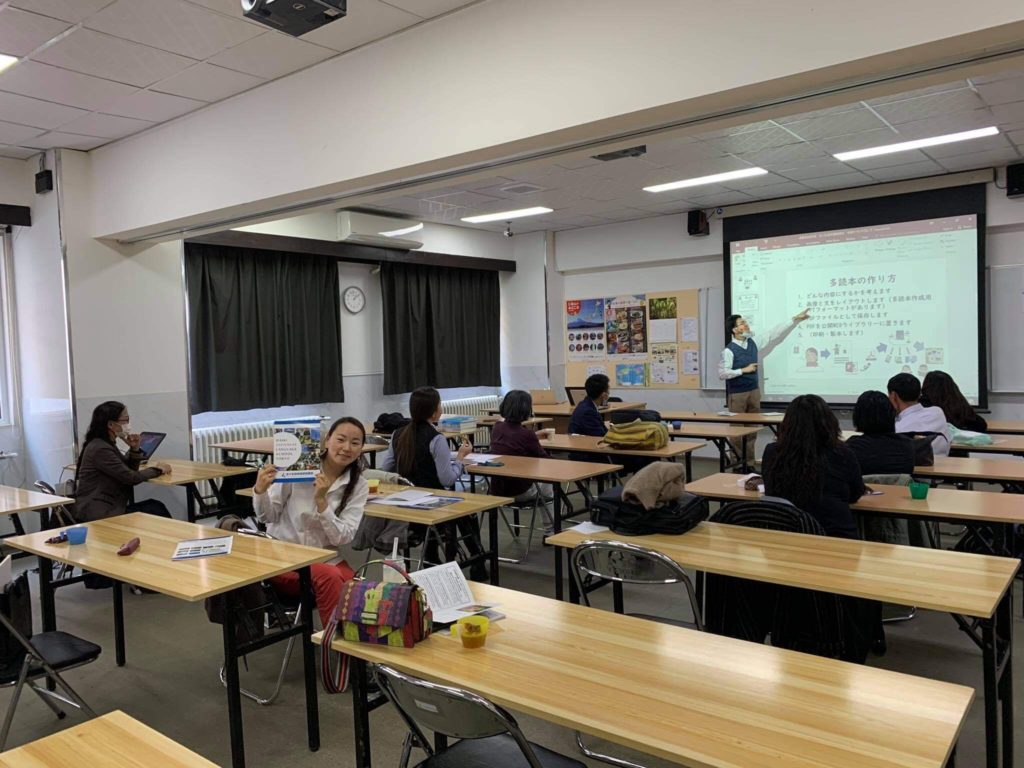In addition to Japanese language education for foreign students and Japanese language education for foreigners living in Japan, the Daiki Group provides “refugee assistance” and Japanese language education program for IT human resource development (in cooperation with the Mongolian University of Science and Technology).
Refugee Assistance


Since its establishment in 1996, the Daiki Group has actively accepted foreign workers and contributed to the manufacturing industry in Japan. We believe that foreign workers are indispensable “human resources” for Japan’s economic development. As globalization is being called for in all aspects of the world these days, the Daiki Group is also becoming increasingly multinational, and the employment of foreigners is gaining momentum. We are not only hiring employees, but also educating them and promoting multicultural coexistence within the company.
In addition to foreign IT engineers, Japanese-Brazilians, international students, and technical intern trainees, we were researching foreigners living in Japan and came up with the keyword “refugee.” We thought that we could provide a wide range of support in terms of “Japanese language education,” “human resource development for foreigners,” and “employment.” Then, in August 2016, the authorized NPO, the Japan Association for Refugees (JAR) and Daiki Japanese Language School Tokyo teamed up to launch a Japanese language education course regarding employment for refugees. With the support of the Yanai Tadashi Foundation (now the Fast Retailing Foundation), we are continuing to run the “Pre-Employment Japanese Language Preparation Course.” We provide “practical and effective preparation for employment” through Japanese language learning by incorporating our experiences and know-how (successes and failures) cultivated through multicultural coexistence within the Daiki Group into the course content. We also employ refugees who have completed the course.
Outline of Pre-Employment Japanese Preparation Course
Purpose
The goal of this program is to develop human resources who can be accepted into Japanese society by learning Japanese for work so that refugees living in Japan can find employment and lead independent lives in Japan.
Course Contents and Results
- 6 courses are offered annually
- 3 hours per day x 60 days = 180 hours total
- Total number of participants: about 300 (as of May 2021) *including those who have been expelled
- Total number of graduates: approximately 170 (as of May 2021)
- Employment rate of graduates: Approx. 60% (Information provided by JAR)
References
Aiming to find a job in 3 months that learning Japanese from scratch “Japanese-Language Program for Employment Preparation”
UNHCR Study Session – A place where refugees can utilize their skills: Refugee employment and contribution to the community
Japanese Language Education Program Launched in Mongolia


Focusing on the excellent human resources enrolled in universities and vocational schools in Asian countries, the Daiki Group provides a wide range of support in terms of “Japanese language education,” “human resource development for foreigners,” and “employment” to foreign students who want to work in Japan. Currently, we have overseas bases in Sri Lanka and Vietnam, and Daiki Lanka (a local subsidiary of the Daiki Group in Sri Lanka) provides Japanese language education and training in software development technology in parallel and promotes entry into advanced technology industries such as AI and IoT as an offshore development base. We are also working with local universities to train excellent Sri Lankan students and to increase the number of IT engineers who will be active in the Daiki Group.
In Mongolia, following Sri Lanka and Vietnam, the “Japanese Language Education Program for IT Human Resource Development” was launched in cooperation with the Mongolian University of Science and Technology in Ulaanbaatar in the fall of 2019. A briefing session on employment with the Daiki Group and Japanese language education was held, and applicants for the program were given an IT aptitude test and interviews with Japanese language teachers and IT department staff, and the best students were selected. With the goal of coming to Japan in the fall of 2021, the first term of Japanese language education was scheduled to begin in February 2020 with face-to-face classes in the local area. However, due to the novel coronavirus, the Mongolian government has implemented a lockdown. Japanese classes had to be held online urgently. The local staff and the Japanese language teacher worked together to continue daily classes for about a year and a half, and in June 2021, an interview was finally held in Japanese with the Daiki Group IT manager. After graduating from university, they are expected to play an active role as a member of the Daiki Group.
Outline of the Japanese Language Education Program for IT Human
Resources Development
Purpose
Training students who want to work in Japan as engineers.
Japanese language education and pre-employment preparation support.
Course Contents
- Maximum number of students: 30 to 50
- 2 hours a day x 5 days a week, held after university classes.
- Target: Equivalent to JLPT N3 or N2
Two career paths available within the Daiki Group
- As international students, they enter Daiki Japanese Language School Tokyo. After that, they work as engineers for the Daiki Group.
- They work for the Daiki Group as engineers.
